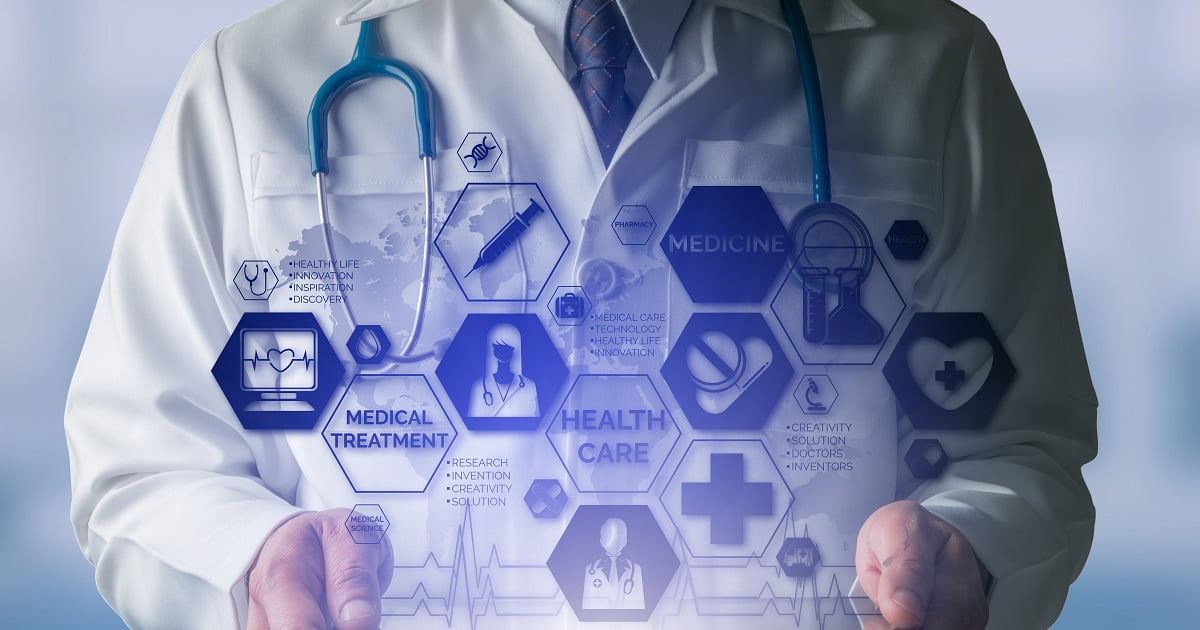
Health Technology, Digital Healthcare
Article | August 21, 2023
Global efforts to tackle gender inequality have grown in recent years. But there is still so much to be done. Figures from the United Nations show that outcomes for women and girls continue to lag across a range of issues, including poverty, education, work and health. And according to the World Economic Forum, at the current rate, it will take 108 years to close the gender gap.
Although healthcare is founded in objectivity and science, gender bias is still remarkably common. We wanted to understand more about female perceptions of healthcare, so we undertook consumer research that delved into the experiences of women compared to men. The results pointed to a clear disparity, finding that women are less likely to visit the doctor when they have symptoms of ill health and, in some cases, are taken less seriously when they do seek medical advice.
Women being left behind
According to our research, a significant proportion of British women feel disappointed in the healthcare they receive, with one in five reporting they weren’t taken seriously when presenting symptoms to a healthcare provider. What’s more, a staggering one in four said they are reluctant to seek medical advice at all for fear of wasting a GP’s time. These statistics suggest that, not only are female experiences of healthcare damaging their relationship with clinicians, but they could be eroding confidence in recognising and acting on warning signs and symptoms too.
This sentiment is particularly evident when focusing on cardiac care. One in eight women (13%) feel ignored when presenting symptoms of heart disease to healthcare professionals, compared to just 4% of men. And of UK adults who have received a coronary heart disease (CHD) diagnosis, women experiencing symptoms were 55% more likely than men to visit the doctor multiple times before receiving a referral for further investigation. On top of this, women are five times more likely to receive a false finding from the cardiac stress tests that are traditionally used to assess heart health.
“There does appear to be a gender bias in onward referral to secondary care and for diagnostics in the local area, which is influenced by the attending healthcare professionals’ risk assessment. Traditional teaching has led to gender bias, as we are programmed to attribute a lower level of pre-test probability and risk to females. This may have contributed to a general lack of awareness around cardiovascular health in women. For example, in a survey I carried out among more than 600 female employees working within North West Anglia NHS Foundation Trust, 82% said they didn’t feel informed about their cardiovascular health. Considering participants included some of the most medically informed women in the UK, the results speak volumes about how we view cardiac health among women.”
- Dr Rebecca Schofield, consultant cardiologist at North West Anglia NHS Foundation Trust
These widespread misconceptions around heart disease and heart attacks are often exacerbated by what we see in the media – think of the countless TV stereotypes of male characters clutching their chests and falling to the floor.
But given that CHD is responsible for one in 13 female deaths, it appears that public health efforts have failed to make people aware of the risks for women. It is, perhaps, not surprising then that 42% of women with CHD did not immediately recognise their symptoms as signs of heart disease. In short, women are missing out on time-critical diagnoses and treatment due to a lack of awareness and education among both healthcare providers and the public.
Technologies making a difference
Thankfully, progress is being made to improve healthcare outcomes for women. Innovative technologies are increasingly providing diagnostic solutions that can reduce incidences of human bias and give clinicians greater clarity on the presence or severity of different conditions in their female patients.
For example, AI is already being used to detect diseases such as cancer more accurately. Its adoption is facilitating reviews and translations of mammograms 30 times faster, with 99% accuracy, reducing the need for unnecessary biopsies.
There’s extraordinary potential for AI and healthcare, and it’s something the NHS continues to recognise, most recently with the launch of its Artificial Intelligence Laboratory (AI Lab) and NHS England’s (NHSE) MedTech Funding Mandate. The latter aims to accelerate the uptake of selected innovative medical devices, diagnostics, and digital products to patients.
As part of the NHS efforts, NHSE has mandated the HeartFlow Analysis for use in hospitals across England for patients, male or female, who might otherwise be sent for a cardiac stress test. The HeartFlow Analysis is a gender-neutral technology that takes data from a coronary CT scan of the heart and leverages deep learning (a form of AI) and highly trained analysts to create a personalised, digital 3D model of each patient’s coronary arteries. This then helps clinicians to quickly diagnose CHD and decide the appropriate treatment for patients of any gender. Time spent in hospital is minimised for patients and often layered testing and unnecessary invasive diagnostic procedures can be avoided.
Final thoughts
While AI is helping us tackle gender bias in certain areas such as oncologic and cardiac testing, healthcare professionals are not absolved of responsibility when it comes to confronting this problem. It remains incumbent upon clinicians to recognise unconscious bias that would deter them from referring women or minority patients for much-needed testing.
Outside of the hospital, public health education efforts must expand so that far more of us can recognise shortness of breath, nausea, vomiting, back or jaw pain, and other symptoms beyond chest pain to be indicators of a heart attack in a woman. Knowing what to look for and overcoming personal bias that might lead to these signs being disregarded, may allow us to help one of the more than 100 women who will experience a heart attack in the UK today.
Read More

Health Technology, AI
Article | July 18, 2023
Momentum in digital healthcare transformation… it’s massive, and much needed.
As organizations adapt to new modes of care, demands on resources, and consumer expectations, payors and providers are eyeing opportunities to reduce costs, improve care, build awareness, and expand relationships.Here are 8 trends we’re currently tracking into 2021:
TREND 1
The evolution of healthcare will be characterized by a reengineering of clinical care and operations around digital health and pervasive real-time use of data and advanced analytics. Gartner
TREND 2
The current landscape has underscored the importance of improving workflows, achieving greater clinical efficiencies and better integrating data across organizations through tools like natural language processing, remote process automation, and cloud-based technologies. Becker’s Hospital Review
TREND 3
Now more than ever, healthcare organizations must build a multi-channel digital experience portfolio to deliver personalized consumer-centric experiences that drive engagement and reduce costs. Becker’s Hospital Review
TREND 4
With increasing emphasis on cross-platform (EHR, CRM, CMS, virtual health, etc.) and cross-organizational data portability, advanced APIs and interoperability should ensure secure and efficient data exchanges between EHR systems, devices, and various channels of care. Forbes
TREND 5
COVID-19 has pushed telehealth into the mainstream, and adoption has gained impressive traction. Expect expansions of asynchronous virtual care leveraging integrated wearable technologies. Business Insider Intelligence / Research and Markets
TREND 6
With more healthcare data available, artificial intelligence and machine learning technologies will provide greater speed and insights to analyze and predict outcomes that drive change in patient care. Gartner / Forrester
TREND 7
Organizations will continue looking to Social Determinant of Health strategies to help understand health disparities – including those highlighted through COVID-19 infections – and alleviate some of the financial strains while delivering high quality care. Fierce Healthcare / Healthify
TREND 8
Successfully making the transition to offering greater price transparency will not only put healthcare organizations in compliance, but help satisfy patient demand, increasing patient engagement and even point-of-service payments. Health Leaders Media
The strategy imperative
With so much call for transformation, it’s vital to resist the pull of “shiny object” point solutions and to, instead, build a fully-considered digital strategy. Need help getting started? Our healthcare experts help the nation’s largest providers and payers navigate and execute their north star strategy, tackling specific challenges through assessments, best-practice advice, strategy, and roadmaps. Explore our thought leadership and connect with us to learn more today.
Read More

Healthtech Security
Article | November 29, 2023
Social media has become a powerful tool to connect people with friends, relatives, family, and other loved ones. Worldwide, around 4.2 billion people are actively using the internet. Among them, 3 billion are regularly active on social media channels. Social media is not just about interpersonal conversations; at least 80 percent of users follow one business on Instagram. With all the ads on your Facebook news feed, you connect with various brands or become aware about many brands. But does social media in healthcare make any impact?
Almost all industries have started to realize the power of social media and how it can impact connecting with consumers. Various social media platforms help companies share information, increase brand awareness, and partner with industry influencers. Social media has overpowered traditional marketing strategies. Social media has become the wave of the future.
Regarding the uptake of social media, the healthcare industry has been a bit slower. However, the industry now has accepted the undeniable importance of social media in healthcare. The reluctance might have been due to the risks associated for the providers as well as patients. Privacy and confidentiality of patient information has to be maintained always. Those were the challenges of social media in healthcare. However, consumers can get information from social media faster than any other tool.
The Healthcare industry includes both the healthcare technology providers as well as the healthcare service providers. Whether you are a service provider or a technology provider, social media can impact your customers equally. This article discusses the positive effects and benefits of social media in healthcare, especially healthcare service providers.
Embraced by the Medical Community
The healthcare industry took notice of social media when government agencies and other business industries started to reap the benefits of social media. A recent survey revealed an interesting fact about the use of social media in healthcare. More than 1500 healthcare providers around the US have social media presence online. Hospitals miss key opportunities if they don’t use social media. These hospital systems have started effectively using social media to reach out to their past, current, and future patients. Social media in healthcare is an easy medium to share vital information with consumers and patients in the industry.
The survey also revealed that more than 30% of medical professionals use various social media platforms to network with their peers. Many physicians also use these social media platforms for multiple activities in open forums. Having an active online presence evokes transparency among clients and peers. Healthcare providers can join various platforms such as Twitter to become healthcare influencers. Through social media in healthcare, providers can make connections, engage the community, and explore the industry.
The Case of Cleveland Clinic, Ohio
Cleveland Clinic in Ohio, US is the best example of how social media can be used to reach out to patients, engage them online, and stay ahead of competitors. They have more than 2 million followers on Facebook, 1.9 million followers on Twitter, and around 5 lack followers on LinkedIn. They have very different and unique social media strategies. They do post about whatever happens on the campus, including doctors practicing in their respective departments and interactive sessions with doctors and HODs, etc. Also, they do provide health tips and information, general health advice, and updates on the latest medical technologies and treatments. Apart from these, the hospital also reaches out to patients for queries and feedback through social media and responds to them promptly. These effective social media strategies help them in building up a brand, reputation management, create a patient relationship and build patient loyalty.
Loved by Healthcare Consumers
To find advice and new treatments, healthcare consumers widely use social media. This creates an opportunity for providers to connect with consumers through various forms of healthcare educational content. More than 40 percent of consumers believe that social media in healthcare affects their wellness decisions and health. Among 18 to 24 years old, 90 percent of people trust the medical information they get on social media. This shows the importance of healthcare providers on social media channels.
Mobile healthcare is expanding as consumers depend more on the internet for information. Countless fitness and health apps are available online. However, many of them are not effective and do not cure diseases but can change behaviors. Having an app will help you increase your accountability, as a provider, among consumers.
Positive Impact of Social Media on Healthcare
The healthcare community is widely embracing the scope of social media in healthcare. Healthcare technology providers, hospitals, and other service providers are opening new accounts to create a consistent image among consumers. There are many ways to improve care by reaching out to patients through social media in healthcare. Some of the positive impacts of best practices for social media in healthcare are as follows:
Increasing Access Across Generations
Healthcare companies have almost stopped employing the traditional ways of advertising. Patients always need quick access to information to reduce the risk of getting flu or to find new providers, including baby boomers, every generation is online. According to Forbes, as of 2017, 9 percent of Facebook users were above 55 years of age. This present generation is very tech-savvy, they search online for local healthcare services and healthcare information. They use Facebook and YouTube. So, you need to create a marketing strategy that targets baby boomers.
Generation X also searches health-related topics online, which accounts for 1.5 billion views on YouTube each day. As they care for children and aging parents, they may search for the best long-term care facilities, how to soothe a colicky baby, and so much more. As millennials are focused on healthy living and being cost-conscious, they depend more on social media platforms for healthcare information. Ninety-three percent of millennials say that they do not rely on healthcare providers for preventive health information.
Thus, as everyone goes online for healthcare information, healthcare service providers should consider the role of social media in healthcare seriously. By providing reliable and accurate information, healthcare providers can engage with consumers and increase the patient experience through social media.
Creating Authenticity
The days that the patients trust doctors blindly have gone. Healthcare consumers have become smarter and want to have relationships with providers who care for them. Allowing your tech-savvy employees to share videos and pictures of events or office helps have a human touch. It also improves patient engagement and overall patient satisfaction.
If patients know the people in your reception or nurses of respective departments, it helps them relax, engage, and makes them share their health history more openly. This is possible as they connect with those in the office through your social media in healthcare. It increases your authenticity.
Keeping an Eye on Competitors
Administrators and marketers keep an eye on their competitors through their social media platforms. They evaluate pain points, community involvements, service lines, and marketing strategies sitting in their offices. Hospitals and other providers can quickly get feedback on technologies and marketing strategies the competitors are using. This would help them if they want to incorporate these things in their care process before investing.
You can take note of the social media platforms where your competitors are performing well. This approach to social media in healthcare would remove the possibility of failure with your social media strategy, especially when you begin with it.
Real-time Updates
During emergencies and other situations, social media in healthcare allows you to communicate quickly. Social media updates can provide life-saving information, from crisis alerts to census notifications. World Health Organization (WHO) is an excellent example; they provide real-time information to the masses regarding any health crisis, warnings, and other critical safety information during disasters, using social media, especially Twitter.
Similarly, by providing real-time information to your consumers through your social media channels, you can increase your authenticity, authority, and dependency. Real-time access to information saves lives.
Gathering Feedback
Patients often want to communicate with their doctors quickly. They may need to share something about a recent appointment or about a reaction they had to medication. Making patients provide feedback on social media helps you learn how they feel about their medicine and care.
You can get essential feedback that might help you improve your care. It also helps you recognize and reward the staff that the consumers recognize. As a provider, you can also get back to them for additional information after the feedback you get from them on social media. This possibility of social media in healthcare will work more to provide better care next time.
Social Media for the Future
Social media in healthcare is going to stay here and have advancements from time to time. Most of the modern consumers are tech-savvy and want to have everything at their fingertips. Modern patients have no patience. Therefore, social media works to engage patients and enhance the patient experience and satisfaction.
Whether you are a large service provider, a solo practitioner, or run a hospital, you need a social media presence. For engaging with your community, social media in healthcare helps a lot. It can make an impact beyond your imagination. Use these strategies to improve the quality of the healthcare you provide.
It may be a tiresome job to do it all alone. We, at Media7, provide social media services to engage your consumers. Whether you are a service provider or a technology provider, we are here to help you with our compelling social media strategies. We help healthcare companies generate leads, brand themselves, increase sales, and make them your happy customers. For more details about us, visit https://media7.com/.
Frequently Asked Questions
What are the advantages and disadvantages of using social media in health care?
When used cautiously, social media can provide clear benefits, such as clinical education, professional networking, and patient’s health promotion. However, there can be disadvantages too, including privacy and confidentiality of patients, resulting in formidable consequences.
How has social media influenced the marketing of health care?
For establishing public awareness and managing reputation, social media is practical means. As part of an effective marketing plan, social media has become an essential medium for healthcare professionals to interact with consumers and engage them.
What is the Importance of Social Media in the hospital?
By providing important and general information on healthcare, hospitals can make their presence more valuable to consumers. Encouraging patients to share their feedback and thoughts makes hospitals connect with them and improve the care process.
{
"@context": "https://schema.org",
"@type": "FAQPage",
"mainEntity": [{
"@type": "Question",
"name": "What are the advantages and disadvantages of using social media in health care?",
"acceptedAnswer": {
"@type": "Answer",
"text": "When used cautiously, social media can provide clear benefits, such as clinical education, professional networking, and patient’s health promotion. However, there can be disadvantages too, including privacy and confidentiality of patients, resulting in formidable consequences."
}
},{
"@type": "Question",
"name": "How has social media influenced the marketing of health care?",
"acceptedAnswer": {
"@type": "Answer",
"text": "For establishing public awareness and managing reputation, social media is practical means. As part of an effective marketing plan, social media has become an essential medium for healthcare professionals to interact with consumers and engage them."
}
},{
"@type": "Question",
"name": "What is the Importance of Social Media in the hospital?",
"acceptedAnswer": {
"@type": "Answer",
"text": "By providing important and general information on healthcare, hospitals can make their presence more valuable to consumers. Encouraging patients to share their feedback and thoughts makes hospitals connect with them and improve the care process."
}
}]
}
Read More

Article | August 27, 2021
Everybody deals with stress and anxiety, however the key is to know what to do when you’re stressed out. It is not always easy to keep your feelings from getting the best of you.
With this in mind, here are seven tips that a person can use to help manage their daily stresses and anxieties before they get out of control.
1. Get all of the facts of the situation: Gathering the facts of a certain event can prevent us from relying on exaggerated and fearful assumptions. By focusing on the facts, a person can rely on what is reality and what is not. Most importantly, do not focus on your fearful thoughts when you’re stressed out.
2. Take a break: Sometimes, we get stressed out when everything happens all at once. When this happens, a person should take a deep breath and try to find something to do for a few minutes to get their mind off of the problem. A person could take a walk, listen to some music, read the newspaper, or do an activity that will give them a fresh perspective on things.
3. Carry a small notebook of positive statements with you: Another technique that is very helpful in managing fear is to have a small notebook of positive statements that makes you feel good. Whenever you come across an affirmation that relaxes you, write it down in a small notebook that you can carry around with you in your pocket. Whenever you feel depressed, open up your small notebook and read those statements.
4. You can’t predict the future: While the consequences of a particular fear may seem real, there are usually other factors that cannot be anticipated and can affect the results of any situation. We may be ninety-nine percent correct in predicting the future, but all it takes is for that one percent to make a world of difference.
5. Challenge your negative thinking with positive statements and realistic thinking: When encountering thoughts that make you fearful or depressed, challenge those thoughts by asking yourself questions that will maintain objectivity and common sense. Focus on the reality of your situation and not on your thoughts. Your fearful thoughts can make things worse so try to focus on something positive when you get anxious.
6. Divide your activities into separate steps: When facing a current or upcoming task that overwhelms you with a lot of anxiety, divide the task into a series of smaller steps and then complete each of the smaller tasks one step at a time. Completing these smaller activities will make the stress more manageable and increases your chances of success.
7. Take advantage of the help that is available around you: There are many individuals who have been expertly trained in the field of psychology to help you find ways to manage fear and anxiety. Seek out someone whom you trust to provide sound advice and guidance. This same professional can also help you create an action plan for dealing with your fears and anxieties in the future.
Read More